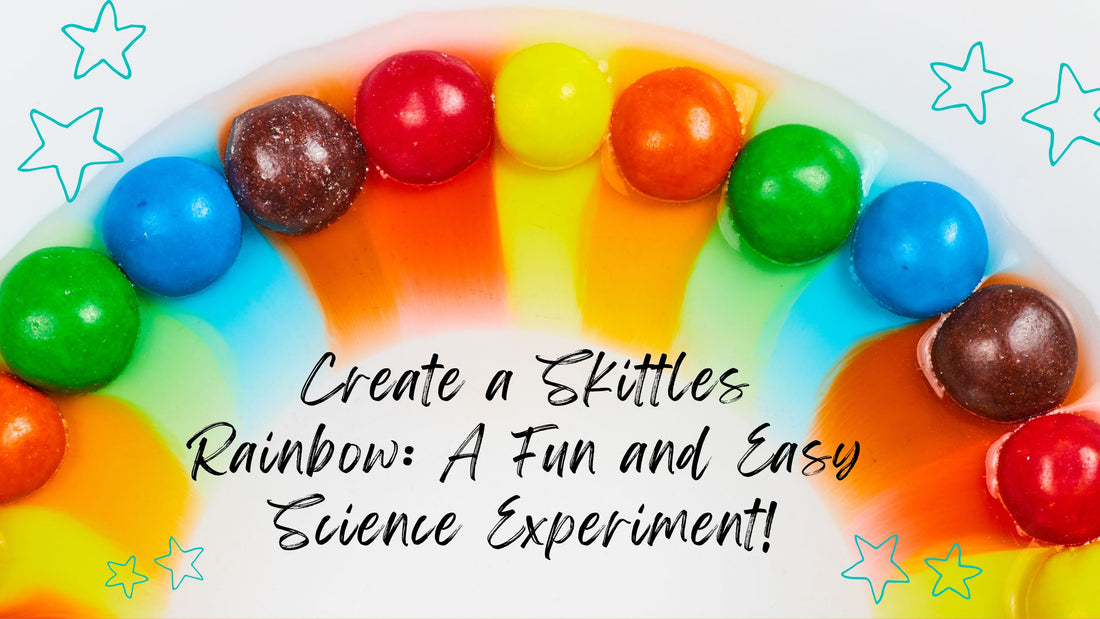Looking for a fun and colorful way to spark your kids' curiosity? This Skittles Rainbow experiment is perfect for engaging young minds and making science fun. Plus, it's a great way to create some colorful memories together. Imagine the joy on your kids' faces as they watch a rainbow come to life right in front of their eyes. This experiment is not just about pretty colors—it's a fantastic opportunity to introduce basic scientific concepts in a way that's easy to understand and exciting to see.
Gather Your Materials
First things first, let’s gather everything we need:
- A bag of Skittles
- A white plate or shallow dish
- Warm water
Got everything? Great! Let’s move on.
Create Your Skittles Rainbow
Now for the fun part. Follow these simple steps to create your Skittles Rainbow:
- Arrange Your Skittles: Spread the Skittles in a circle around the edge of the plate. Mix up the colors to make it as vibrant as possible.
- Pour the Water: Gently pour warm water into the center of the plate, just enough to cover the bottom and reach the Skittles. Be careful not to disturb the candies.
- Watch the Magic Happen: Sit back and watch as the colors from the Skittles dissolve and spread toward the center, creating a beautiful rainbow.
Isn't it amazing? This colorful display isn’t just beautiful—it’s also a cool science lesson. Let’s see what’s happening here.
The Science Behind the Magic
So, what’s going on with our Skittles Rainbow? When you pour warm water over the Skittles, the sugar and food coloring on the candy's surface start to dissolve. Here’s an easy way to think about it: Imagine the Skittles are crayons. When you add warm water, it's like you’re melting the crayons, and the colors start to spread out on the paper (the plate).
Here are the key scientific concepts involved:
- Dissolution: The outer layer of Skittles is made of sugar and dye. When you add warm water, it dissolves this outer layer. Warm water works faster than cold water because the heat gives energy to the molecules, making them move more quickly and break apart the sugar and dye faster.
- Diffusion: Once the sugar and dye dissolve, they start to spread out in the water. This spreading is called diffusion, which is the movement of particles from an area where there are a lot of them (around each Skittle) to an area where there are fewer (the center of the plate). It’s like a crowded room where people gradually move to where there’s more space.
- Creating the Rainbow: The different dyes in the Skittles don’t mix right away because they have different properties. Each color dye has molecules of different sizes and weights, causing them to diffuse at different rates. This is why you see distinct bands of color spreading from each Skittle, creating a rainbow effect.
Experimenting with Different Variables
Want to take it up a notch? Try changing things up to see how it affects your Skittles Rainbow:
- Change the Water Temperature: Use cold water instead of warm water and see how it changes the speed of the color spreading. You might find that cold water makes the colors spread more slowly.
- Alter the Candy Placement: Arrange the Skittles in different patterns or distances to see how it affects the rainbow. You could try placing them in a spiral, a line, or in clusters and see what happens.
Analogy: It’s like baking cookies with different recipes. Just as changing ingredients or cooking times can give you different results, changing these variables will create unique and exciting effects in your experiment.
The Skittles Rainbow experiment is a fantastic way to mix fun and learning. By gathering your materials, setting up your rainbow, understanding the science behind it, and experimenting with different variables, you can create a beautiful spectrum of colors right at home.
So, go ahead and try it out. Share your colorful creations with friends and family, and keep exploring the wonders of science. Remember, the possibilities are endless when you start experimenting. As Albert Einstein once said, "The important thing is not to stop questioning." Happy experimenting, friends! 🌈🚀
Feel free to share your colorful creations with us @istiloprints. We’d love to see your rainbows and hear about the fun you had!
More Fun Science Activities
If you enjoyed this experiment, stay tuned for more fun and easy science activities you can do at home. Let’s make learning an adventure, one experiment at a time!







